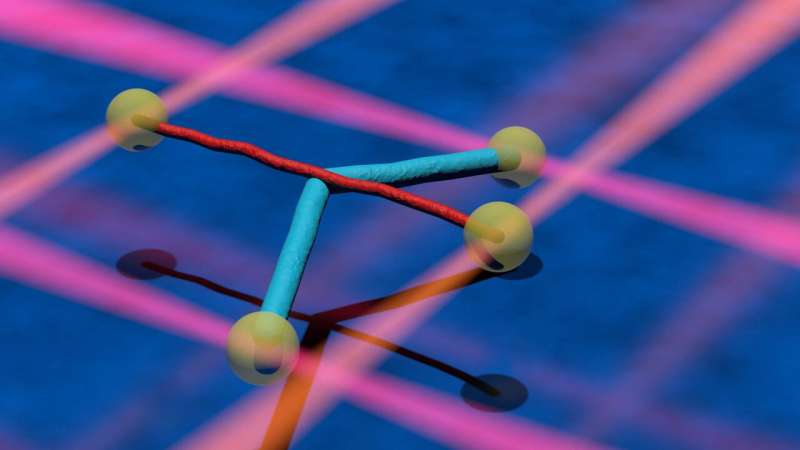Stronger together: How protein filaments interact

Just as the skeleton and muscles move the human body and hold its shape, all the cells of the body are stabilized and moved by a cellular skeleton. Unlike the vertebrate skeleton, this cellular skeleton is a very dynamic structure, constantly changing and renewing itself. It consists of different types of protein filaments, which include intermediate filaments and microtubules. Now, a research team from the University of Göttingen has observed a direct interaction between microtubules and intermediate filaments outside the cell, and quantitatively measured this interaction. The results of the study were published in Nature Communications.
Microtubules are dynamic filaments that constantly grow and shrink, and in this way, are responsible for many important processes in cells. The research team observed that intermediate filaments stabilize microtubules: When intermediate filaments are added to microtubules, shrinkage is suppressed and thus the lifespan of the microtubules is extended. To investigate whether this is actually due to direct interactions between the two filaments, a single microtubule was positioned crossed with a single intermediate filament.
Dr. Laura Schaedel, who shares first authorship of the publication with Charlotta Lorenz (Ph.D. student at the Institute for X-ray Physics at the University of Göttingen), explains: "The intermediate filament was 'pulled' over the microtubule like a bow over a violin string."
Lorenz adds, "This allows the two filaments to bind to each other. However, this bond is broken again shortly afterwards due to the pulling. The process of 'tearing apart' provides information about the strength of the bond."
Professor Stefan Klumpp from the Institute for the Dynamics of Complex Systems at Göttingen University, who led the project together with Professor Sarah Köster from the Institute for X-ray Physics, says, "In addition, we used models and simulations to show that the direct interaction leads to stabilization." The stabilization of dynamic microtubules can be an important issue for biological cells, for example to regulate their local stability. "The interactions that we observed are important because they enable better understanding of cellular processes," says Köster.
These results are in turn relevant for understanding many other processes, such as those involved in diseased cells. The new method to take direct measurements of the actual interaction of two different biopolymers can also be applied to other protein filaments, as well as to non-biological fibers.
More information: Laura Schaedel et al, Vimentin intermediate filaments stabilize dynamic microtubules by direct interactions, Nature Communications (2021). DOI: 10.1038/s41467-021-23523-z
Journal information: Nature Communications
Provided by University of Göttingen




















